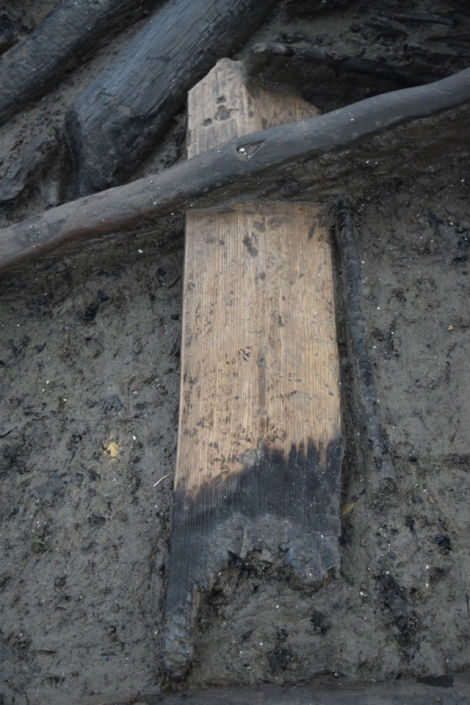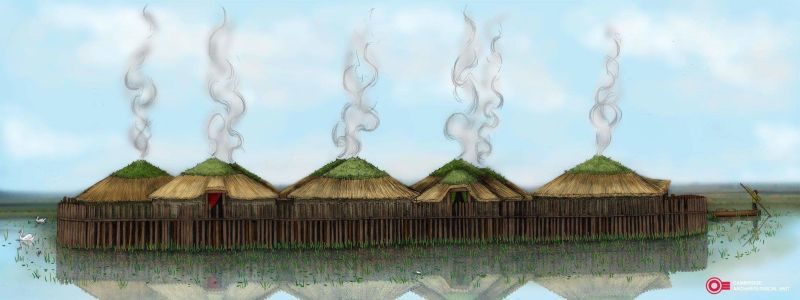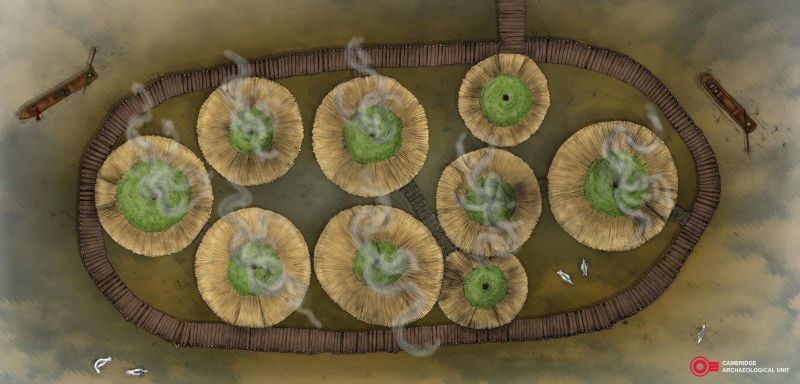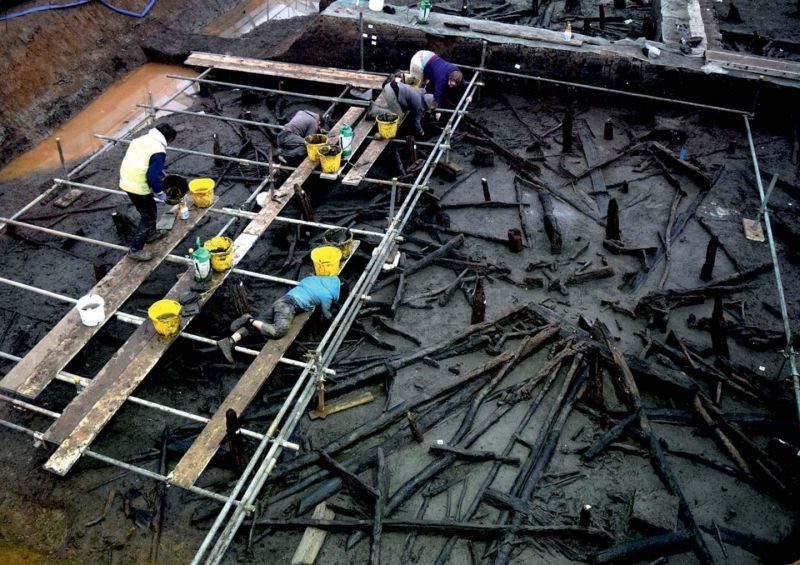New research published today in the journal Antiquity offers a detailed look into Must Farm, a late Bronze Age settlement located near Whittlesey in eastern England. First described in 2016, the settlement is known as the "Pompeii of Britain" owing to its remarkable state of preservation. Like Pompeii, the settlement captures a moment in time-albeit a moment of tragedy. Some 3,000 years ago, the wooden structures caught fire and plunged into the waters below, an event that contributed to their preservation.
Among the more notable findings presented in the new study is the startling revelation that Must Farm burnt down around a year after it was constructed. The new study also details the artifacts found at the site, provides an updated timeframe for the settlement, and offers new insights into the daily activities of the Bronze Age people who lived there.
Must Farm was built at some point between 1100 and 800 BC, and it consisted of several roundhouses propped up on wooden stilts above a small river in a wetland environment. The dwellings are considered "the most completely preserved prehistoric domestic structures found in Britain," according to the new research, which was led by Mark Knight from the Department of Archaeology at the University of Cambridge.
"Must Farm is unquestionably one of the most important British archaeological sites to have been excavated this century and this paper showcases some of the outstanding research to have been undertaken here," Richard Madgwick, an archaeologist at Cardiff University who wasn't involved with the new study, said in an email to Gizmodo.
The site is well-preserved on account of several factors. First, the settlement was constructed above a small river, so much of it was waterlogged right from the start (moist, soggy conditions prevent organic materials, like wood, from degrading). Second, some of the items within the settlement that caught fire, such as textiles, were carbonized when they hit the water, and then protected for thousands of years by soft, non-porous river silts. Lastly, the site wasn't disrupted by human activities, such as modern agriculture or drainage. It was only until a massive brick quarry was built nearby that the settlement was discovered.
Excavations at the site revealed hundreds of pile stumps, which once represented the internal structure and layout of the settlement. The settlement featured at least five stilted structures, an internal walkway, and a fence that enclosed the group of dwellings.
Analysis of the wooden beams found at the site showed the timbers were still fresh when the fire took hold. What's more, there's no evidence that the structure ever underwent repairs. Taken together, this evidence suggests the settlement was only about a year old when the fire struck, as the authors wrote in the new study:
The emerging evidence suggests that one year is a reasonable estimate for the length of settlement occupation. Ongoing dendrochronological analysis of the structural timbers reveals that the settlement was built in a single construction phase, using wood of a similar felling year. The same analysis also shows differential sapwood shrinkage on areas of individual oaks protected from, and exposed to, the fire, which suggests that the timbers were still green, or unseasoned, when the settlement was destroyed by fire. Oak timber is broadly accepted to require one to two years to season under natural conditions in Britain.
Comment: It appears these folk may have been in hurry to build this site.
"The fire was catastrophic," Knight told Gizmodo in an email. His team's fire investigator is analyzing the possible causes and course of the fire, with evidence suggesting "the conflagration started from the inside of at least one of the dwellings," he said.

Excavations have yielded over 180 textile items, 160 wooden artifacts, 120 pottery vessels, 90 pieces of metalwork, and nearly 80 glass beads. More specifically, these items consisted of bronze tools and weapons, fabrics and fibers, quern-stones for grinding cereals into flour, loom weights, spindle whorls, and other relics.
That some people have taken to calling this site "Britain's Pompeii" is both a blessing and a curse, said Knight.
"In broad terms the site fits the allegory perfectly: a snapshot of a once living community, stopped at a moment in time. The danger however, is that we see the site as a frozen moment in time, presenting what others have described as a kind of ideal, systemic inventory," Knight told Gizmodo. "In reality, the settlement endured, it had time as well as space and things were consumed and discarded. The foreshortened temporality of the site together with the exceptional preservation made it seem more 'ethnographical' than 'archaeological' but it was still dynamic and protracted."
"We can imagine that the settlement took a matter of weeks to build, months to occupy, days to burn, and years to decay. Anything but a moment in time."
Knight said his team's task is to "animate" the settlement-its construction, occupation, and demise-and to give "time" to the individuals who built it and lived there.
"In terms of its temporality, we can imagine that the settlement took a matter of weeks to build, months to occupy, days to burn, and years to decay," he said. "Anything but a moment in time."
Excavations at Must Farm suggest the Bronze Age people who inhabited the settlement were prosperous, well-equipped farmers and landholders who were armed with swords and spears. Knight said they lived in a wetland environment, but they routinely moved between water and land.
Typical daily activities would have included textile production (including weaving), tending farm animals (cows and sheep) and crops (wheat, barley, and flax), harvesting, hunting, fishing (pike and eels), butchering meat (including venison, wild boar, and pork), cooking and eating, navigating the waterways with logboats, protecting their territory, and trading textiles for metal or lavish items such as glass beads or finely burnished ceramic bowls, said Knight.
"The phenomenal preservation and the incredible chronological resolution makes this site unparalleled in a British context," Madgwick told Gizmodo. "It is no understatement to say that the wide-ranging research that has been undertaken is transforming our understanding of prehistoric life in Britain."
Madgwick said Mark Knight and his team deserve the "utmost credit for maximizing the potential of this truly exceptional site," adding that it's "rare to have an opportunity to reconstruct prehistoric life in high resolution at a minute scale, and the team have grasped that opportunity with both hands."






There are cyclical events, that leave Earth vulnerable to NEO's, and other violent changes to the land masses, that Mankind lives on.
We are over due for just one of the said events.
Every 3700 years, and NEO's, are already piling in.